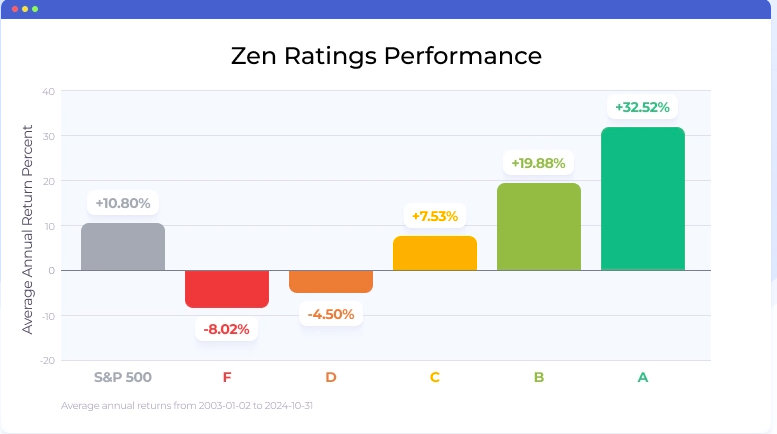20 Best Advice On Choosing AI Stock Trading Platform Sites
20 Best Advice On Choosing AI Stock Trading Platform Sites
Blog Article
Top 10 Tips To Evaluate The Market Coverage Offered By Ai-Based Stock Predicting/Analyzing Platforms
Market coverage is among the most important factors to take into consideration when looking at AI-powered trading platforms. This will determine how many assets and markets can be accessed. Market coverage is essential because it permits you to diversify your portfolio, learn about global markets and to adapt various trading strategies. These are the 10 best strategies for evaluating the market coverage offered by these platforms.
1. Evaluate Supported Asset Classes
Stocks: Ensure your platform is compatible with major stock exchanges, including NYSE, NASDAQ LSE and HKEX, and that it includes mid, small and large cap stocks.
ETFs Check whether the platform lets you pick from a variety of ETFs that gives you an array of exposure.
Options and Futures: Check if the platform supports derivatives such as options or futures, as well as other products that leverage.
Commodities and forex: Check whether your website offers forex and commodities, as well as precious metals and energy commodities.
Check if the platform you are using is compatible with major cryptocurrencies including Bitcoin and Ethereum as well as alternative currencies.
2. Verify coverage in your area
Global markets: The platform should include major global markets like North America and Europe, Asia-Pacific and emerging markets.
Regional focus: Make sure you know whether the platform is focusing on particular market segments or regions which match your trading preferences.
Local exchanges. Make sure the platform allows exchanges regional or local to your area.
3. Delayed Data vs. Delayed Data
Real-time data: Ensure that the platform has real-time data for trading and to make timely decisions.
Delayed information: Determine whether delayed information is available at no cost or a discounted price this could be enough for investors with a long-term view.
Data latency. Verify whether the platform is able to minimize delays for real-time information feeds particularly for high-frequency trading.
4. Assess the historical data availability
Historical depth: Make sure whether the platform is able to provide comprehensive historical data (e.g. more than 10 years of data) for analysis and backtesting.
Review the accuracy of data from the past.
Corporate actions - Examine the historical records to make sure it covers stock splits, dividends as well as other corporate activities.
5. Examine the for market depth and order information
Level 2 data: Check that the platform contains Level 2 data to aid in price discovery and improved execution.
Spreads for bids: See if the platform shows real-time bid-ask spreads for precise prices.
Volume data: Make sure that your platform provides detailed volume data to analyze market liquidity and market activity.
6. Review the coverage of Indices Sectors
Major indices - Ensure your platform works with major indexes such as S&P 500 and FTSE 100 to benchmark.
Sector-specific data: See whether the platform offers data for specific sectors (e.g., technology or healthcare, energy,) for targeted analysis.
Customized indexes. Check if the platform supports creating and keeping track of custom indices that meet your needs.
7. Integrate News and Sentiment Data
News feeds: Ensure that the platform is able to provide real-time feeds of news from credible sources, like Bloomberg and Reuters in the case of market-moving events.
Sentiment analysis: Find out whether there are tools to perform sentiment analysis based on social media posts, news articles, or data sources.
Event-driven strategies: Determine whether the platform supports the use of event-driven trading strategies (e.g. earnings announcements or economic reports, etc.).
8. Check for Multimarket Trading Capabilities
Cross-market trade: Make sure the platform allows for trading across different markets and asset categories using a common interface.
Conversion of currencies Check to see if you can convert currencies automatically for international transactions and if there are multiple currency options for your account.
Verify that you are in compliance with time zones.
9. Check the coverage of alternative sources
Alternative data: For unique insights, confirm whether your platform is using other data sources (e.g. satellite imagery web traffic, satellite imagery, or credit card transactions).
ESG data. Verify whether the platform is stocked with environmental, socio-economic, and governance data for socially accountable investing.
Macroeconomic data - Ensure that the platform has macroeconomic data (e.g. GDP, inflation) for fundamental analysis.
Examine the Feedback of Users and Review the Market Reputation
Feedback from users: Read user feedback to evaluate the credibility of the platform as well as market coverage.
Check the reputation of the platform, in terms of its coverage and awards.
Testimonials and case studies They will showcase the platform's performance in specific markets or classes of assets.
Bonus Tips:
Free trial period: Test the market coverage of the platform as well as the quality of its data with the demo or trial for free.
API access - Determine if the API can be used to gain access to data from the market by programming.
Support for customers: Ensure that the platform provides support for market-related queries or data issues.
Use these guidelines to assess the market coverage provided by AI stock trading platforms. Choose a platform with access to the markets, information and tools you need to be successful in trading. Market coverage is essential to diversify portfolios, discover new opportunities and to adapt to changing market conditions. Follow the top this hyperlink on best ai trading software for site advice including ai investment app, ai for stock trading, best ai trading software, ai for stock trading, best ai for trading, ai stock market, ai for investment, ai investing app, incite, best ai stock and more.
Top 10 Tips To Evaluate The Transparency Of Ai Stock Predicting/Analyzing Trading Platforms
Transparency is an important aspect when it comes to evaluating AI-driven stock prediction and trading platforms. It gives users the capacity to trust a platform's operation as well as understand how decisions were made, and confirm their accuracy. These are the top 10 tips to determine the level of transparency on such platforms.
1. AI Models: A Simple Explaination
Tips: Ensure that the platform provides information on AI models and algorithms that are employed to create predictions.
Knowing the technology behind it allows users to assess the reliability of the technology.
2. Disclosure of Data Source
TIP: Ensure that the platform reveals the sources of data it uses.
The platform will use reliable and extensive data, if you know the sources.
3. Performance Metrics and Backtesting Results
Tips: Make sure you seek out transparent reports on the performance of your business, like accuracy rates and ROI, as well as the results of backtesting.
This gives users to compare historical performance with current platform.
4. Real-Time Updates and Notifications
Tip. Make sure the platform is able to provide real-time notifications or updates regarding system and trade changes and also forecasts.
What is the reason? Real-time transparency means users are always informed about critical actions.
5. Transparent Communication Concerning Limitations
Tip - Check to see whether the platform is honest about the risk associated with its prediction and trading strategies.
The reason: Recognizing your weaknesses can build trust with your the users and assist them in making educated decisions.
6. Raw Data Access for Users
Tip: Determine if the AI model is able to gain access to raw data as well as intermediate results or both.
Why? Users can do their own analysis and test their theories by accessing raw data.
7. Transparency and openness in the cost of fees and expenses
Tips: Make sure the platform clearly outlines the fees, subscription costs, and potential hidden charges.
Transparency in pricing is a positive thing. It reduces the risk of unexpected expenses and boosts confidence.
8. Regular report and audits
Verify if a platform has regular reports and is subject to third-party audits to confirm the effectiveness of its operation.
Why Independent Verification is important: It increases credibility, and ensures accountability.
9. Predictions that can be explained
Tip Check to determine whether there is an explanation of how the platform can make specific predictions and recommendations (e.g. feature priority, decision trees).
Why? Explainability allows users to gain insight into the rationale behind AI-driven actions.
10. Feedback and Support Channels for Users
Tip - Check if the platform has open channels for feedback and support from users, and if they provide a clear response to users' concerns.
Why: Responsiveness in communication is a sign of commitment to openness.
Bonus Tip: Regulatory Compliance
Be sure that the platform follows and is clear about its conformity to financial regulations. This will add another layer of credibility to the platform.
When you thoroughly examine these elements it is possible to determine if an AI stock prediction and trading platform operates in a transparent manner, allowing you to make educated decisions and build confidence in its capabilities. Take a look at the best best ai penny stocks for blog examples including best ai trading platform, can ai predict stock market, invest ai, best ai stocks, ai options trading, ai in stock market, ai copyright signals, best ai stocks, best stock prediction website, chart ai trading and more.